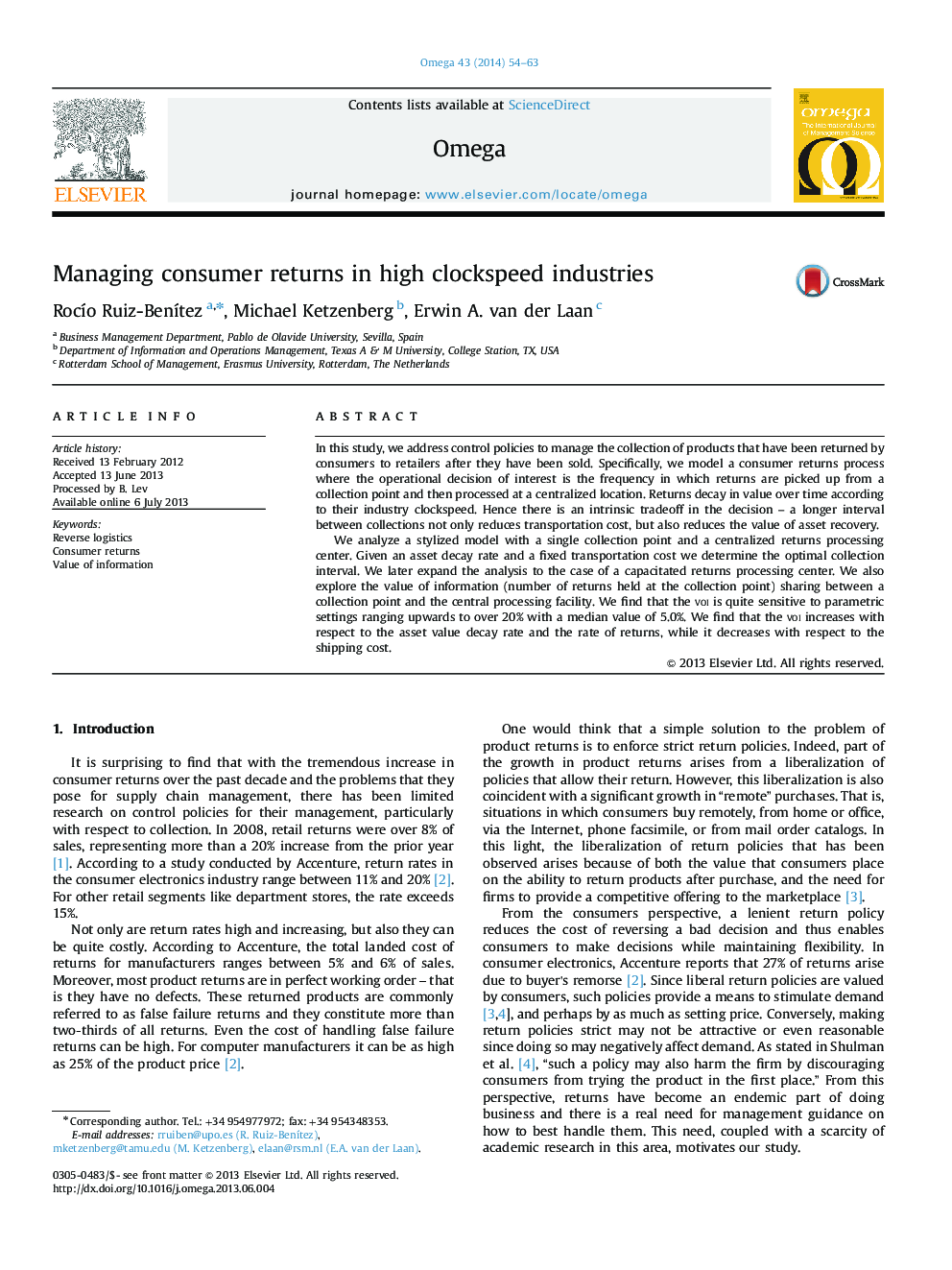| Article ID | Journal | Published Year | Pages | File Type |
|---|---|---|---|---|
| 1032700 | Omega | 2014 | 10 Pages |
Author-Highlights•Consumer return process where operational decision is pick up frequency of returns.•Analysis of a single collection point and a centralized returns processing center.•Obtaining optimal collection interval and exploring the value of information sharing.•We find that VOI increases with respect to asset value decay rate and rate of returns.•We find that VOI decreases with respect to shipping cost.
In this study, we address control policies to manage the collection of products that have been returned by consumers to retailers after they have been sold. Specifically, we model a consumer returns process where the operational decision of interest is the frequency in which returns are picked up from a collection point and then processed at a centralized location. Returns decay in value over time according to their industry clockspeed. Hence there is an intrinsic tradeoff in the decision – a longer interval between collections not only reduces transportation cost, but also reduces the value of asset recovery.We analyze a stylized model with a single collection point and a centralized returns processing center. Given an asset decay rate and a fixed transportation cost we determine the optimal collection interval. We later expand the analysis to the case of a capacitated returns processing center. We also explore the value of information (number of returns held at the collection point) sharing between a collection point and the central processing facility. We find that the voi is quite sensitive to parametric settings ranging upwards to over 20% with a median value of 5.0%. We find that the voi increases with respect to the asset value decay rate and the rate of returns, while it decreases with respect to the shipping cost.
